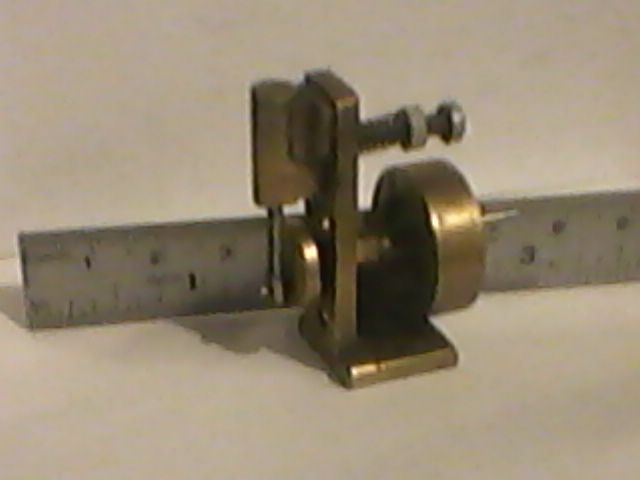I promised a sketch showing my thoughts on this engine.

The structure is a single cast iron block with integral cylinder and main bearing. The cylinder is a deep blind hole with inlet and exhaust porting in the wall. The piston, a bit longer than the stroke, is cast iron with a tight running fit in the cylinder (similar to small two stroke I.C. engines). This should obviate the need for a piston ring. The steam enters and leaves the cylinder through passages in the piston that match cylinder wall porting at TDC and BDC. However it is unlikely that the engine will work if residual steam/water is trapped in the cylinder after the exhaust port closes (I suspect that a condenser would cure this problem but that would be way outside the design brief for this engine). Therefore the exhaust port is elongated and timed so that it remains open for most of the dead stroke. This is accomplished by a scroll milled into the surface of the piston mating with a guide pin held in the structure. This rotates the piston to allow the timing of the ports (I believe a similar scroll system was used in the Maxim Gun). If the cylinder was horizontal it would be wise to place the exhaust port at the bottom and leave it open to make the cylinder self draining.

A Scotch yoke is used solely to keep the number of parts to a minimum. It is located by the cylinder and side piece provided by the structure. To allow the piston to rotate the yoke has a cylindrical stud that engages with a tee slot cut in the piston. The yoke is machined from a block of bronze.
The yoke mates with the crankpin which is integral with the main shaft and flywheel. To allow the part to be slid through the structure as one piece the shaft diameter will have to be greater than the stroke plus the crankpin diameter. The part, made of steel, is held in place by a locating pin running in a groove cut in the shaft.
I believe the engine is viable with the following comments:
It will leak steam
I think the Scotch Yoke is quite simply a horrible mechanism
A good size flywheel is needed to take the piston through the dead stroke
The engine is not reversing and will have a fixed cut-off
It may need quite a bit of running in depending on the fit of the piston in the cylinder
The surface speed of the main shaft in the structure will be high and could be the limiting factor on engine speed
I have tried to keep the rubbing surfaces to cast iron on cast iron, cast iron on mild steel and bronze and bronze on mild steel. However I suspect the Scotch yoke will need lubricating frequently
Although there is a lot of machining the only difficult items will be the cylinder bore and the scroll in the piston.
After all that I suspect the next comment is “build it and see if it works”.
JA
Sub Mandrel.







